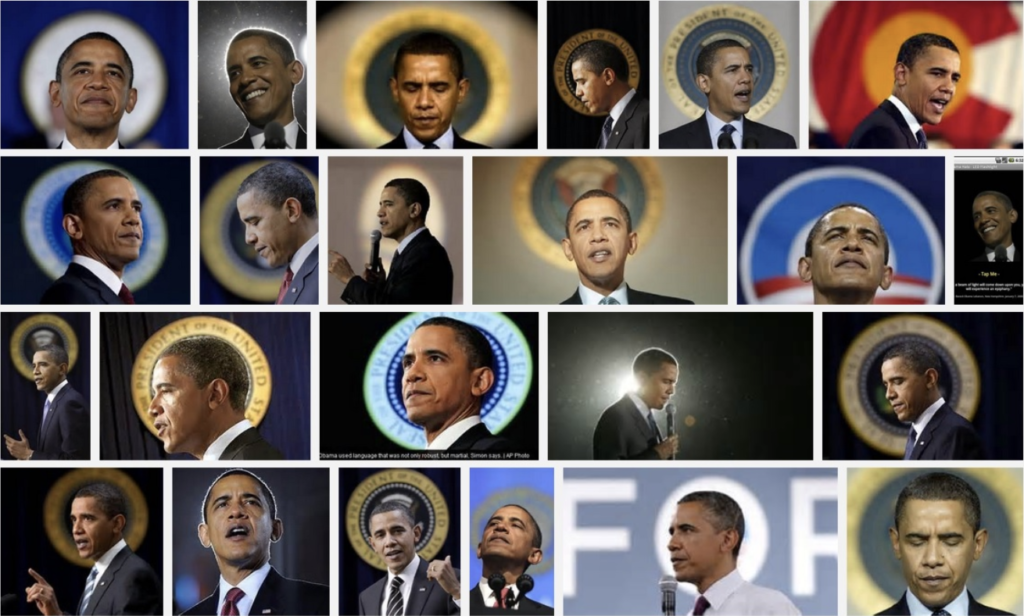Yesterday, I noticed California Representative Eric Swalwell liked this tweet from Michael Skolnik:
The question. The chosen image. The participation. They all illustrate one of the fundamental differences between conservatives and liberals.
Conservatives understand that people are fundamentally flawed. That when we say people are capable of anything, we mean anything – good or bad. The Founding Fathers understood that people are not angels and cannot be trusted with unchecked power. That is why they structured the government with checks and balances – dividing power three ways.
Liberals, however, have a very different view. They believe that some people, with their good intentions, cannot, and will not, possibly go bad.
Go back to this image of President Obama. Remember the many images of Obama with the halo?

I’m confident you’ll see many of these in answer to Michael’s tweet.
Unlike conservatives, liberals are more prone to cults of personality: Barack Obama, Bill Clinton, Michelle Obama, Andrew Cuomo, and Dr. Anthony Fauci being the latest.
Liberals see themselves as virtuous and tolerant, and therefore, they’re not capable of evil or corruption. As they project their view of themselves on others who share their beliefs, or those for whom they would vote, they therefore believe that some people truly are better, and more important, that others.
When Obama was running, you may recall the stories of people fainting during his speeches. And after he was elected, school children around the country would sing songs about his greatness.
As liberals turn away from religion and worship of God (or any god), they embrace themselves or their chosen elected representatives as their saviors.
As they believe some people are truly beyond reproach, so they believe conservatives are beneath them and the cause of this country’s troubles. As tolerant as liberals say they are, they believe that conservatives deserve to be destroyed. This explains why liberal attacks on conservatives are always personal, and not policy-related.
When liberals attack conservatives, it’s always in the context of what they believe to be the personal motivations of conservatives: hatred of kids, blacks, gays, women, transgenders, etc. Conservatives want people to die. They want to pollute the environment and destroy the earth. They’re visceral hatred of conservatives justifies their putting aside their otherwise vaunted “tolerance.”
It’s no secret liberals don’t like conservatives. They say it, in some form, every day. They see conservatives as stupid, racist, homophobic, sexist, sheltered, uneducated, science-denying, hicks. Conservatives are a danger to the republic and to themselves, and they need liberals to set and enforce the rules to save them from themselves.
Look at how liberals revered and spoke of Obama during his presidency versus how conservatives see President Trump now.
Liberal politicians and commentators deified Obama before and after he was elected. (Who can forget the thrill Chris Mathews gets up his leg at the mere mention of Obama?) Meanwhile, conservatives who voted for Trump, and will vote for him again, are quick to acknowledge many of Trump’s rougher personality traits.
Conservatives know who Trump is. They understand his faults. They know what rubs them the wrong way. While those are all just opinions, they’re quite realistic in their views of the man. Yet they don’t let those views stand in the way of judging him by his actions and the positive things he has done for this country.
When people elevate our politicians and see them as gods among men, they start losing perspective and open the door for politicians who think they can get away with anything.
Better to view all of our politicians with skepticism and understand that they’re not infallible. Best to expect that they may stray or take advantage of their situation.
Like our system of checks and balances, the reason we have voting is to keep them honest and accountable. If ever there was an election to consider corruption and its potential effects on this country, it is this one.

Comments (0)